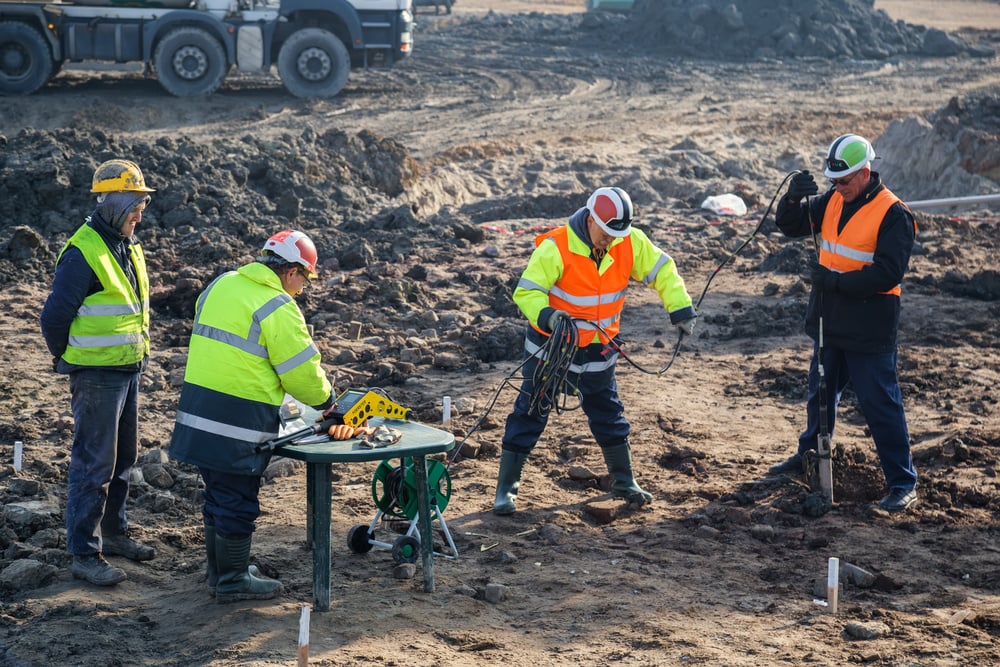The 30-Second Trick For Geotechnical Engineering For Construction Projects
Geotechnical Engineering For Construction Projects - Questions
Table of ContentsOur Geotechnical Engineering For Construction Projects PDFsThe Greatest Guide To Geotechnical Engineering For Construction ProjectsThe Main Principles Of Geotechnical Engineering For Construction Projects 9 Simple Techniques For Geotechnical Engineering For Construction ProjectsSome Known Details About Geotechnical Engineering For Construction Projects The Best Guide To Geotechnical Engineering For Construction Projects
These attributes need to be analyzed by geotechnical engineers to anticipate their movements under various scenarios., making this evaluation necessary.A geotechnical engineer will certainly take a look at dirt to establish the bearing ability of the earth and suggest correct foundation types, such as shallow structures, deep structures like heaps, or specialized solutions like drifting structures for soft dirts. Comprehending the functions and activities of dirt and rock, in enhancement to just how they engage with building and constructions that have actually been set up on or within them, is among the primary explanations for why geotechnical design is necessary.
In enhancement to structural planning and construction, geotechnical engineering is also crucial to the restoration and maintenance of pre-existing structures. Age-related degradation or additional issues could impact a structure's security and efficiency. Environmental management is achieved with geotechnical engineering. Competence in air, water, and soil quality upkeep is used by geotechnical engineers to minimize the adverse effects of tasks.
To sum up, geotechnical engineering is a vital technique that protects the resilience and integrity of civil framework. Geotechnical designers contribute to making structure jobs efficient all over the globe by comprehending the behavior of earth products and applying suitable planning methods.
Geotechnical Engineering For Construction Projects Can Be Fun For Everyone
The fundamental security of any type of task is necessary. Geotechnical design plays an important duty in guaranteeing that frameworks are developed on strong ground, essentially and figuratively. By examining dirt, rock, and subsurface problems, geotechnical engineers provide crucial insights that assist in the layout, building, and upkeep of structures and infrastructure.

Getting My Geotechnical Engineering For Construction Projects To Work
Research laboratory testing: Figuring out the residential properties of dirt and rock. Field screening: Carrying out examinations on-site to examine problems. Evaluation and layout: Making use of information to create foundations, retaining wall surfaces, tunnels, and other structures. A number of high-profile building and construction jobs have actually efficiently made use of geotechnical design to ensure their security and safety and security. As an example:: The world's tallest building required a deep understanding of the underlying geology.

As a leader in geotechnical design, BECC Inc. is devoted to delivering innovative and effective options that fulfill the highest possible requirements click over here of quality and safety and security., a mechanical designer and rock hound.
A Biased View of Geotechnical Engineering For Construction Projects
Terzaghi additionally established the framework for concepts of bearing capability of structures, and the concept for prediction of the rate of negotiation of clay layers as a result of debt consolidation. Later on, Maurice Biot completely developed the three-dimensional soil consolidation theory, prolonging the one-dimensional design formerly created by Terzaghi to much more general theories and introducing the collection of basic equations of Poroelasticity.
Geotechnical designers check out and establish the homes of subsurface conditions and materials. They additionally develop corresponding earthworks and preserving frameworks, tunnels, and framework he has a good point foundations, and might manage and assess sites, which may even more involve site monitoring as well as the threat analysis and mitigation of all-natural hazards - Geotechnical Engineering for Construction Projects. Geotechnical designers and engineering rock hounds carry out geotechnical examinations to acquire information on the physical properties of soil and rock hidden and beside a site to develop earthworks and structures for recommended structures and for the fixing of distress to earthworks and structures triggered by subsurface conditions.
Our Geotechnical Engineering For Construction Projects PDFs
Still, they are often utilized to allow a rock hound or designer to be lowered into the borehole for direct visual and hand-operated evaluation of the dirt and rock stratigraphy. Various dirt samplers exist to fulfill the needs of various design projects. The common penetration examination, which makes use of a thick-walled split spoon sampler, is the most common means to accumulate disrupted samples.

If the interface in between the mass and the base of an incline has a complex geometry, incline security analysis is tough and mathematical option techniques are required. Normally, description the interface's exact geometry is unknown, and a streamlined interface geometry is assumed. Finite inclines need three-dimensional designs to be assessed, so most slopes are analyzed thinking that they are considerably large and can be represented by two-dimensional models.
10 Simple Techniques For Geotechnical Engineering For Construction Projects
Developing the design based on a working hypothesis of behavior expected under the most likely conditions. Selection of amounts to be observed as construction profits and computing their prepared for worths based on the functioning hypothesis under the most unfavorable conditions.
Dimension of quantities and evaluation of actual problems. It is unsuitable for jobs whose style can not be altered throughout building.